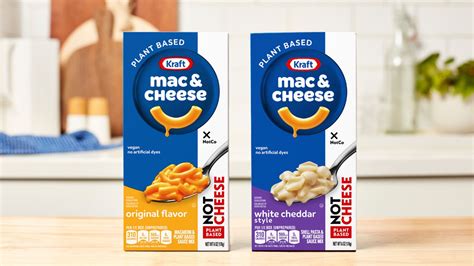
Lifting heavy weights, according to Boston Celtics legend Kevin McHale, can negatively impact a basketball player’s shooting ability, a philosophy he attributes to observing Larry Bird’s training regimen. McHale suggests Bird avoided excessive weight training to maintain his shooting touch, a perspective that contrasts with modern basketball training focused on strength and conditioning.
Kevin McHale, a Hall of Famer and former teammate of Larry Bird on the Boston Celtics, recently shared his insights on why he believes that excessive weightlifting can be detrimental to a basketball player’s shooting performance. McHale pointed to Bird’s approach to training as a prime example, suggesting that Bird consciously avoided bulking up to preserve his legendary shooting touch. This perspective offers a contrasting view to the modern NBA, where strength and conditioning are heavily emphasized.
McHale’s comments, made during an appearance on the “All the Smoke” podcast with Matt Barnes and Stephen Jackson, have sparked considerable debate among basketball fans, coaches, and trainers. His argument centers around the idea that adding too much muscle mass can alter a player’s shooting mechanics and reduce their flexibility, ultimately impacting their accuracy and range.
“Larry never lifted weights,” McHale stated. “He would do a little bit, but he said, ‘I don’t want to get bulky because it’ll mess up my shot.'”
This anecdote highlights a key difference between the training philosophies of Bird’s era and the current NBA. In the 1980s, skill development and basketball-specific conditioning were prioritized, while modern training regimens often incorporate heavy weightlifting to enhance strength, power, and injury prevention.
McHale elaborated on his observations, suggesting that Bird understood the delicate balance between strength and finesse required for elite shooting. Bird, renowned for his exceptional hand-eye coordination, touch, and shooting accuracy, apparently believed that adding excessive muscle mass would compromise these attributes.
“Larry understood his body,” McHale explained. “He knew what he needed to do to be successful, and he wasn’t going to deviate from that.”
McHale acknowledged that the game has evolved significantly since Bird’s era. Today’s players are bigger, stronger, and more athletic. However, he maintained that the fundamental principles of shooting remain the same, and that excessive weightlifting can still negatively impact a player’s shooting touch.
“I’m not saying that players shouldn’t lift weights,” McHale clarified. “But I think it’s important to find the right balance. You don’t want to get so bulky that it affects your shooting.”
The discussion surrounding McHale’s comments raises several important questions about the optimal approach to basketball training. Is there a point at which strength training becomes detrimental to shooting performance? How can players effectively balance strength and conditioning with skill development? And what role does individual body type and shooting mechanics play in determining the ideal training regimen?
To understand McHale’s perspective, it’s crucial to examine the specific physiological factors that contribute to shooting accuracy. Shooting a basketball involves a complex sequence of movements that require precise coordination of muscles in the legs, core, and upper body. The shooter must generate power from the legs and core, transfer that power to the shooting arm, and then release the ball with the correct trajectory, spin, and velocity.
Adding muscle mass can alter this sequence of movements in several ways. First, increased muscle mass can reduce flexibility and range of motion. This can make it more difficult for the shooter to achieve the optimal shooting form and release point. Second, increased muscle mass can change the shooter’s center of gravity and balance. This can affect their ability to maintain a stable base and generate power efficiently. Finally, increased muscle mass can alter the shooter’s muscle activation patterns. This can lead to inconsistencies in their shooting motion and reduced accuracy.
However, it’s important to note that strength training can also have positive effects on shooting performance. Strength training can increase a player’s power and explosiveness, which can translate to increased shooting range. It can also improve a player’s stability and balance, which can make them more resistant to defensive pressure. Furthermore, strength training can help prevent injuries, which can allow players to train and play more consistently.
Therefore, the key is to find the right balance between strength training and skill development. Players should focus on developing functional strength that enhances their basketball-specific movements without compromising their flexibility, balance, or shooting mechanics. This can be achieved through a combination of weight training, plyometrics, and basketball-specific drills.
The intensity and type of strength training should also be tailored to the individual player’s body type, shooting mechanics, and training goals. Some players may benefit from more emphasis on strength training, while others may need to focus more on skill development.
McHale’s comments also highlight the importance of understanding individual player’s body types and mechanics. Larry Bird, known for his exceptional feel for the game and unique shooting style, may have been particularly sensitive to changes in his body composition. What worked for Bird may not necessarily work for every player.
The modern NBA places a premium on athleticism and physical prowess, with players often engaging in rigorous weightlifting programs. However, McHale’s perspective serves as a reminder that skill development and shooting touch should not be sacrificed in the pursuit of strength and power. The most successful players are those who can effectively combine athleticism with finesse, strength with skill, and power with precision.
Several modern NBA players have successfully integrated strength training into their regimens without sacrificing their shooting ability. LeBron James, for example, is renowned for his incredible strength and athleticism, but he is also a highly skilled shooter. Stephen Curry, widely regarded as one of the greatest shooters of all time, also incorporates strength training into his routine to improve his stability and endurance.
These examples demonstrate that it is possible to combine strength training with elite shooting performance. However, it requires a careful and individualized approach that prioritizes functional strength, skill development, and injury prevention.
The debate sparked by McHale’s comments underscores the complex relationship between strength training and shooting performance in basketball. There is no one-size-fits-all answer, and the optimal approach will vary depending on the individual player’s body type, shooting mechanics, and training goals. However, McHale’s perspective serves as a valuable reminder that skill development and shooting touch should not be overlooked in the pursuit of strength and power. The key is to find the right balance that allows players to maximize their athleticism without compromising their ability to shoot the basketball effectively.
Ultimately, the success of any training program depends on the player’s ability to adapt and refine their approach based on their individual needs and goals. Whether a player chooses to follow Larry Bird’s approach and minimize weightlifting or embrace a more modern approach that incorporates strength training, the most important thing is to prioritize skill development and maintain a focus on shooting accuracy.
FAQ:
-
What was Kevin McHale’s main point about weightlifting and shooting?
Kevin McHale’s main point was that excessive weightlifting can negatively impact a basketball player’s shooting ability. He suggested that building too much muscle mass can alter a player’s shooting mechanics and reduce their flexibility, ultimately affecting their accuracy and range. He used Larry Bird as an example, stating Bird avoided heavy weightlifting to maintain his shooting touch. “Larry never lifted weights,” McHale stated. “He would do a little bit, but he said, ‘I don’t want to get bulky because it’ll mess up my shot.'”
-
Why did Larry Bird reportedly avoid heavy weightlifting?
According to McHale, Larry Bird avoided heavy weightlifting because he believed it would make him too bulky and negatively impact his shooting touch. Bird reportedly understood the delicate balance between strength and finesse required for elite shooting and felt that excessive muscle mass would compromise his hand-eye coordination, touch, and shooting accuracy.
-
How does McHale’s view contrast with modern basketball training philosophies?
McHale’s view contrasts with modern basketball training philosophies, which often heavily emphasize strength and conditioning, including weightlifting, to enhance strength, power, and injury prevention. In Bird’s era (1980s), skill development and basketball-specific conditioning were prioritized, while today’s training regimens often incorporate heavy weightlifting to enhance physical attributes.
-
Does McHale argue that players shouldn’t lift weights at all?
No, McHale does not argue that players shouldn’t lift weights at all. He clarifies that it’s important to find the right balance. “I’m not saying that players shouldn’t lift weights,” McHale clarified. “But I think it’s important to find the right balance. You don’t want to get so bulky that it affects your shooting.” He believes players should focus on developing functional strength that enhances their basketball-specific movements without compromising their flexibility, balance, or shooting mechanics.
-
Can modern NBA players successfully combine strength training and elite shooting?
Yes, several modern NBA players have successfully combined strength training and elite shooting. Examples include LeBron James and Stephen Curry, who incorporate strength training into their routines to improve their stability, endurance, and overall performance without sacrificing their shooting ability. This requires a careful and individualized approach that prioritizes functional strength, skill development, and injury prevention.
Expanded Article:
The debate surrounding the optimal training regimen for basketball players has been reignited following comments made by Boston Celtics legend Kevin McHale. McHale, a Hall of Famer known for his exceptional post moves and basketball IQ, recently shared his perspective on the potential negative impact of excessive weightlifting on shooting performance. His remarks, centered around the training habits of his former teammate Larry Bird, have sparked a discussion about the balance between strength and skill in the modern NBA.
McHale’s comments, delivered on the “All the Smoke” podcast, emphasized Bird’s conscious decision to avoid heavy weightlifting. According to McHale, Bird believed that bulking up would negatively affect his shooting touch, a sentiment that stands in stark contrast to the prevalent emphasis on strength and conditioning in contemporary basketball.
“Larry never lifted weights,” McHale stated emphatically. “He would do a little bit, but he said, ‘I don’t want to get bulky because it’ll mess up my shot.'” This anecdote immediately challenged the conventional wisdom that strength training is universally beneficial for basketball players.
The significance of McHale’s statement lies in the context of modern basketball. The game has evolved dramatically since Bird’s era, with players now possessing greater size, strength, and athleticism. Strength and conditioning programs have become increasingly sophisticated, incorporating heavy weightlifting, plyometrics, and other exercises designed to enhance physical performance. However, McHale’s perspective raises the question of whether this relentless pursuit of strength and power may come at the expense of finesse and shooting accuracy.
To fully appreciate McHale’s argument, it’s essential to understand the biomechanics of shooting. Shooting a basketball is a complex skill that requires precise coordination of multiple muscle groups. The shooter must generate power from the legs and core, transfer that power to the shooting arm, and then release the ball with the correct trajectory, spin, and velocity. This entire sequence relies on a delicate interplay of strength, flexibility, balance, and coordination.
Excessive weightlifting can potentially disrupt this delicate balance. Increased muscle mass can reduce flexibility and range of motion, making it more difficult for the shooter to achieve the optimal shooting form and release point. A bulkier physique can also alter the shooter’s center of gravity and balance, affecting their ability to maintain a stable base and generate power efficiently. Moreover, changes in muscle activation patterns can lead to inconsistencies in the shooting motion and reduced accuracy.
However, it’s crucial to acknowledge the potential benefits of strength training for basketball players. Strength training can increase power and explosiveness, leading to increased shooting range. It can also improve stability and balance, making players more resistant to defensive pressure. Furthermore, strength training can help prevent injuries, allowing players to train and play more consistently.
The challenge, therefore, lies in finding the right balance between strength training and skill development. Players should focus on developing functional strength that enhances their basketball-specific movements without compromising their flexibility, balance, or shooting mechanics. This can be achieved through a combination of weight training, plyometrics, and basketball-specific drills. The intensity and type of strength training should be tailored to the individual player’s body type, shooting mechanics, and training goals.
McHale’s emphasis on individual variation is particularly important. Larry Bird, with his exceptional feel for the game and unique shooting style, may have been particularly sensitive to changes in his body composition. What worked for Bird may not necessarily work for every player. Some players may benefit from more emphasis on strength training, while others may need to focus more on skill development.
The modern NBA showcases numerous examples of players who have successfully integrated strength training into their regimens without sacrificing their shooting ability. LeBron James, renowned for his incredible strength and athleticism, is also a highly skilled shooter. Stephen Curry, widely regarded as one of the greatest shooters of all time, incorporates strength training into his routine to improve his stability and endurance. These examples demonstrate that it is possible to combine strength training with elite shooting performance, but it requires a careful and individualized approach.
Another factor to consider is the specific type of weightlifting being performed. Focusing on compound exercises that mimic basketball movements, such as squats, lunges, and push-ups, can help develop functional strength that translates directly to improved performance on the court. Conversely, excessive isolation exercises that target specific muscle groups may not be as beneficial for basketball players.
Moreover, proper technique and form are essential to prevent injuries and maximize the benefits of strength training. Working with a qualified strength and conditioning coach who understands the biomechanics of basketball can help players develop a safe and effective training program.
The debate sparked by McHale’s comments also highlights the importance of considering the overall training load. Overtraining can lead to fatigue, injuries, and decreased performance. Players should ensure they are getting adequate rest and recovery to allow their bodies to adapt to the demands of training. This includes paying attention to nutrition, sleep, and stress management.
In addition to strength training, other forms of conditioning, such as agility drills, speed work, and endurance training, are also essential for basketball players. These types of conditioning can help improve a player’s overall athleticism and performance without necessarily adding excessive muscle mass.
Ultimately, the optimal training regimen for a basketball player is a complex and individualized matter. There is no one-size-fits-all answer, and the best approach will vary depending on the player’s body type, shooting mechanics, training goals, and overall health. However, McHale’s perspective serves as a valuable reminder that skill development and shooting touch should not be overlooked in the pursuit of strength and power. The key is to find the right balance that allows players to maximize their athleticism without compromising their ability to shoot the basketball effectively.
To further elaborate on the specific examples of modern NBA players who have successfully integrated strength training, it’s crucial to analyze their individual approaches. LeBron James, for instance, has consistently prioritized strength and conditioning throughout his career. His training regimen focuses on developing functional strength that allows him to dominate physically on the court. However, he also dedicates significant time to skill development, including shooting practice. His success can be attributed to a holistic approach that combines strength, skill, and basketball IQ.
Stephen Curry, on the other hand, has a slightly different approach. While he certainly incorporates strength training into his routine, he places a greater emphasis on flexibility, mobility, and hand-eye coordination. His training regimen includes exercises designed to improve his shooting mechanics, such as balance drills and release point consistency. Curry’s success is a testament to the importance of skill development and maintaining a delicate touch.
It’s also worth noting that both James and Curry have access to some of the best trainers and resources in the world. They are able to tailor their training programs to their individual needs and goals, ensuring they are maximizing their potential without compromising their health or performance.
The debate surrounding McHale’s comments also extends to the youth basketball level. Many young players are now engaging in intense strength and conditioning programs at a young age. While it’s important for young players to develop a strong foundation of athleticism, it’s also crucial to prioritize skill development and avoid overtraining. Parents and coaches should work together to ensure that young players are training safely and effectively, with a focus on long-term development rather than short-term gains.
Furthermore, the role of genetics cannot be ignored. Some players are naturally more predisposed to building muscle mass than others. These players may need to be more cautious about their weightlifting regimen to avoid becoming too bulky. Conversely, players who have difficulty gaining muscle mass may need to focus more on strength training to improve their power and explosiveness.
The importance of proper nutrition also cannot be overstated. A balanced diet that includes adequate protein, carbohydrates, and healthy fats is essential for supporting muscle growth, recovery, and overall performance. Players should work with a registered dietitian to develop a personalized nutrition plan that meets their individual needs.
In conclusion, the debate sparked by Kevin McHale’s comments underscores the complex and multifaceted nature of basketball training. There is no single “right” way to train, and the optimal approach will vary depending on a variety of factors. However, by prioritizing functional strength, skill development, and individual needs, players can maximize their potential and achieve their goals without compromising their health or performance. McHale’s perspective serves as a valuable reminder that skill and finesse remain essential components of the game, even in the modern era of athleticism and strength.
The discussion further extends into the psychological aspect of shooting. Confidence plays a significant role in a player’s ability to consistently make shots. If a player believes that weightlifting is negatively impacting their shot, it can create a mental block that affects their performance, regardless of the actual physical impact. This highlights the importance of a player’s mental state and the power of positive self-belief in achieving optimal performance.
Moreover, the coaching philosophy of a player’s team also plays a crucial role. Some coaches may prioritize strength and athleticism over skill development, while others may emphasize a more balanced approach. Players should seek out coaches who understand their individual needs and are willing to work with them to develop a training program that is tailored to their strengths and weaknesses.
The evolution of basketball equipment has also influenced training methodologies. Modern basketball shoes are designed to provide greater support and stability, which can allow players to perform more explosive movements and handle heavier loads. Advanced training tools, such as resistance bands and functional training equipment, can also help players develop functional strength and improve their basketball-specific movements.
The role of data analytics is also becoming increasingly important in basketball training. Teams are now using data to track player performance, identify areas for improvement, and develop personalized training programs. This data-driven approach can help players optimize their training and maximize their potential.
However, it’s important to remember that data is just one piece of the puzzle. It’s also crucial to rely on the expertise of experienced coaches and trainers, as well as the player’s own intuition and self-awareness. The best training programs are those that combine data-driven insights with human expertise and individual needs.
Ultimately, the success of any training program depends on the player’s ability to adapt and refine their approach based on their individual needs and goals. Whether a player chooses to follow Larry Bird’s approach and minimize weightlifting or embrace a more modern approach that incorporates strength training, the most important thing is to prioritize skill development and maintain a focus on shooting accuracy.
In the end, the legacy of Larry Bird’s shooting prowess speaks for itself. His unwavering dedication to skill development and his understanding of his own body allowed him to achieve unparalleled success on the court. While modern basketball has undoubtedly evolved, the fundamental principles of shooting remain the same, and McHale’s perspective serves as a valuable reminder that skill and finesse should never be sacrificed in the pursuit of strength and power. The key is to find the right balance that allows players to maximize their athleticism without compromising their ability to shoot the basketball effectively and consistently. This ongoing dialogue ensures the sport continues to evolve while respecting the nuances of individual player development and performance.









